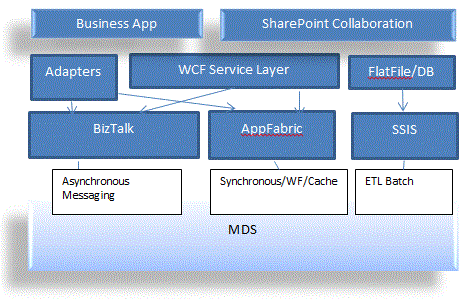- Flexible mapping capability across business domains ( models in MDS ). Entity mapping across MDS models does not seem to be natively supported. For example, if you define a CDI ( Customer Model ) and a separate PIM ( Product Model ), entities across model domains can't be mapped in hierarchies. However, there are ways of getting around this through modified subscription views.
- Versioning is supported at the model level and provides Model Locking and Version Ancestry Analysis. Versioning at the entity level seems to be a strong requirement. However, MDS provides notifications for data governance issues for data stewards. It seems that the best way to handle entity versioning is at the Model level with sub-versions. When using something like ODATA services over REST, URLs could point to different model versions that expose entities according to the macro model version number. So this doesn't seem like a big issue to me.
Popular Posts
-
Back Again Jumping in a little late in the game for year-end recaps but the good news is we’ve been too busy to post. The past 6 mon...
-
- By David Nolting Denali CTP was released in July. You can find it at Microsoft Denali We’ve recently finished a Proof of Concept u...
-
B - By David Nolting Introduction In my last post I discussed the benefits of using SQL Server Master Data Services to build reliable MDM...
-
Welcome to our blog. We will be blogging on unfolding events as we experience them in Enterprise Solution Architecture. We are based i...
-
- By David Nolting The Context Recently, ReachSOA architects were employed to help model a referential architecture for a renowned, in...
-
- By David Nolting Recently, we've been pulled in to look at how MDM ( Master Data Management ) can be achieved with Microsoft Technolo...
Monday, April 11, 2011
MDM with Microsoft Master Data Services ( MDS )
Subscribe to:
Post Comments (Atom)
















Wow, good to see feature on MDM solution. It will gone rock with my management cycle.
ReplyDeletedean graziosi
Great resource!
ReplyDeletewww.profisee.com
This comment has been removed by the author.
ReplyDeleteNice article...
ReplyDeleteMaster Data Management
Vendor Master Data Management
Material Master Data Management
Customer Master Data Management
Product Master Data Management
Service Master Data Management